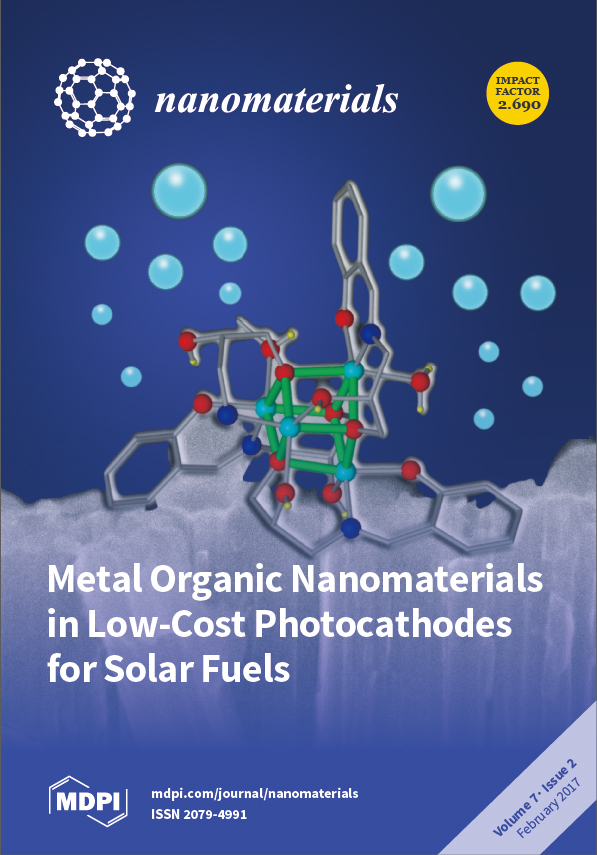Ultra-hydrophobic bilayer coatings on a glass surface were fabricated by sol–gel process using hexadecyltrimethoxysilane (C
16TMS) and tetramethoxysilane (TMOS) (1:4 molar ratio) as precursors. After coating, silica nanoparticles (SiO
2 NPs) functionalized with different mono-alkoxy derivatives (methoxytrimethylsilane, TMeMS; ethoxydimethylvinylsilane, DMeVES; ethoxydimethylphenylsilane, DMePhES;
[...] Read more.
Ultra-hydrophobic bilayer coatings on a glass surface were fabricated by sol–gel process using hexadecyltrimethoxysilane (C
16TMS) and tetramethoxysilane (TMOS) (1:4 molar ratio) as precursors. After coating, silica nanoparticles (SiO
2 NPs) functionalized with different mono-alkoxy derivatives (methoxytrimethylsilane, TMeMS; ethoxydimethylvinylsilane, DMeVES; ethoxydimethylphenylsilane, DMePhES; and methoxydimethyloctylsilane, DMeC
8MS) were added, assuring the microscale roughness on the glass surface. Influences of the functionalized SiO
2 NPs and surface morphology on the hydrophobicity of the hybrid films were discussed. The successful functionalization of SiO
2 NPs with hydrophobic alkyl groups were confirmed by Fourier transform infrared spectroscopy (FTIR). The thermal stability of hydrophobic SiO
2 NPs showed that the degradation of the alkyl groups takes place in the 200–400 °C range. Bilayer coating with C
16TMS/TMOS and SiO
2 NPs modified with alkoxysilane substituted with C
8 alkyl chain (SiO
2 NP-C
8) has micro/nano structure. Hydrophobicity of functionalized SiO
2 NPs-C
8 and its higher degree of nanometer-scale roughness gave rise to ultra-hydrophobicity performance for bilayer coating C
16TMS/TMOS + SiO
2 NPs-C
8 (145°), compared to other similar hybrid structures. Our synthesis method for the functionalization of SiO
2 NPs is useful for the modification of surface polarity and roughness.
Full article






